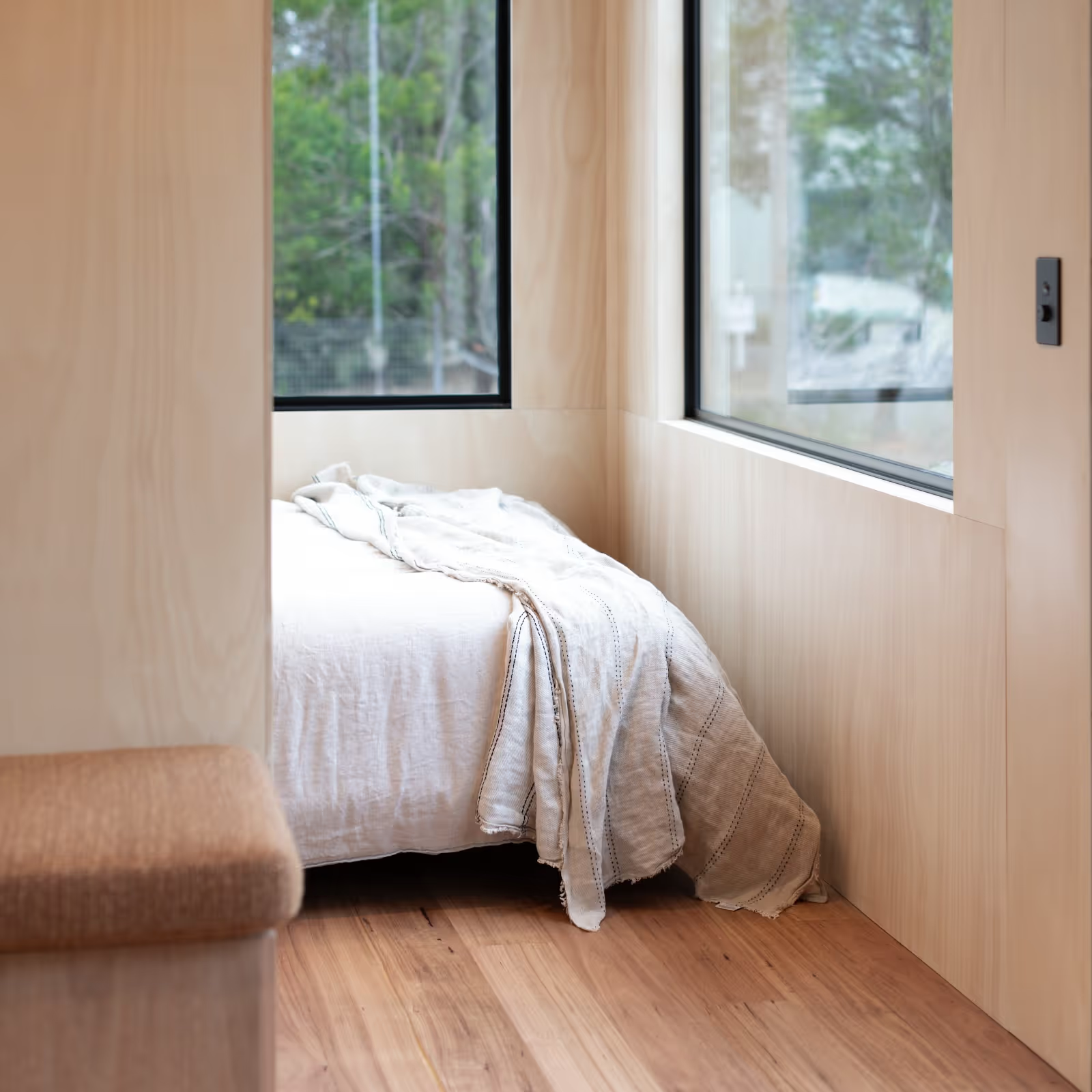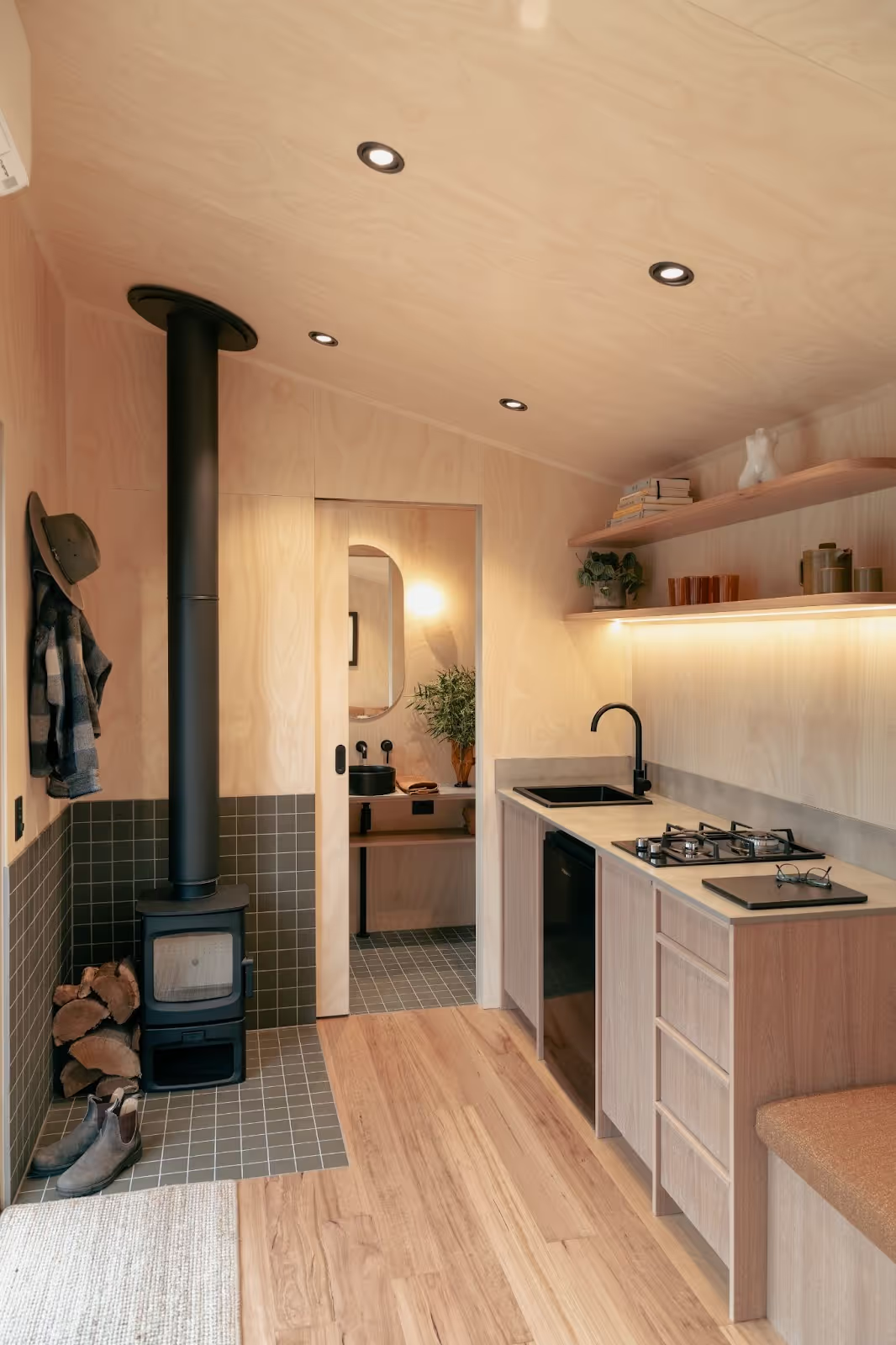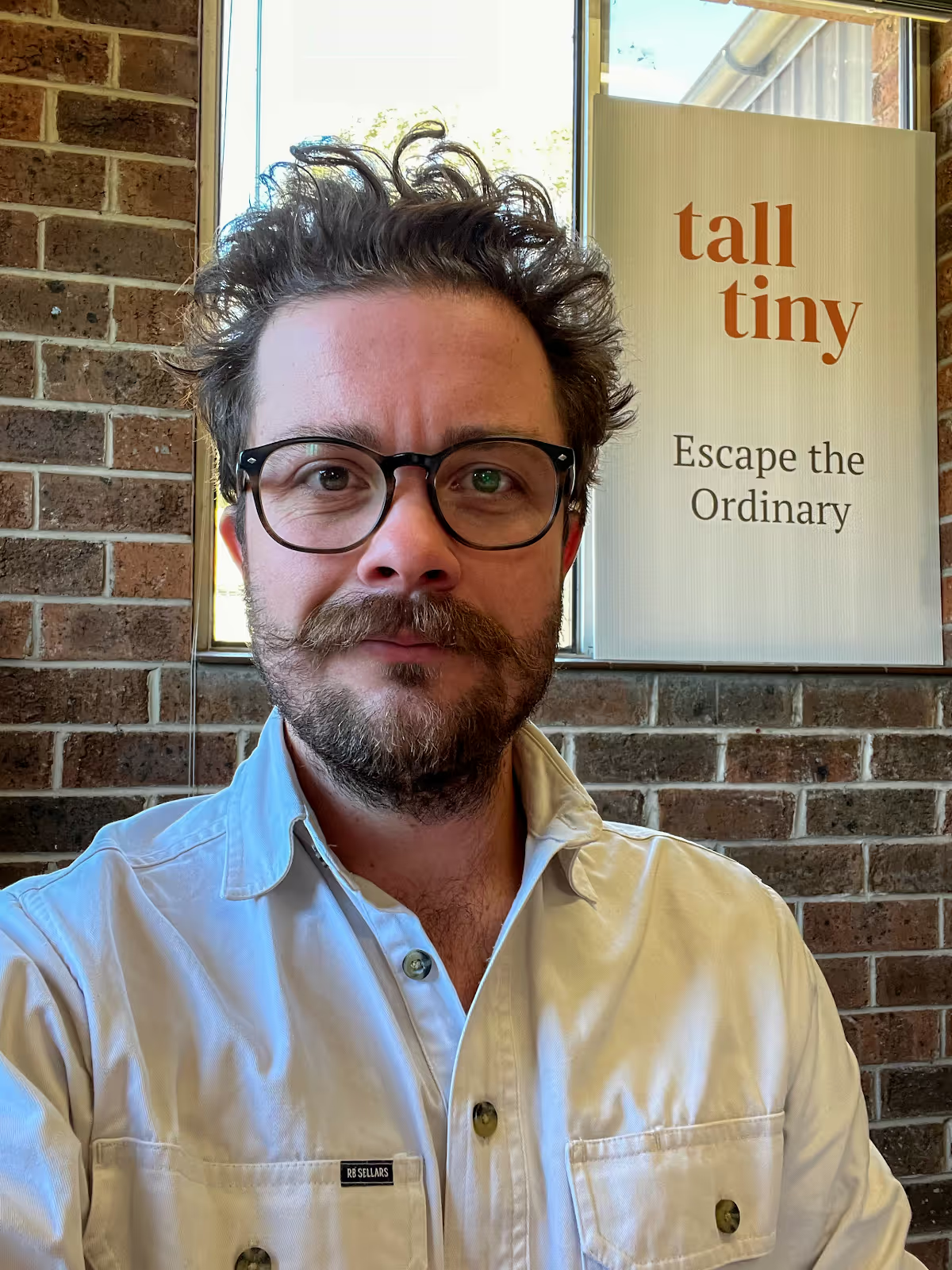Tiny Houses: For A Holiday House

Your Escape, Simplified
The Australian holiday home—a place to retreat, reconnect, and recharge—has traditionally involved significant investment, maintenance demands, and complex approval processes. Tiny houses represent a sophisticated alternative, delivering architectural quality and environmental consciousness without these traditional burdens.
We've all dreamed of having a holiday house, driving off on Friday afternoon for a few hours to escape reality. Often it's out of reach—another house and mortgage, not to mention the cleaning and upkeep.
That's where tiny homes come in. For a fraction of the price of a traditional house, you can have your home away from home. Plus, being tiny, the upkeep is minimal.
With no council approval needed, your land is the limit to where you can install your tiny home—no building envelope issues. The top of the hill, next to the river, wherever you like.
The Rules and Regulations
It's really the perfect solution to a holiday house. As Tall Tiny Houses come under caravan regulations, you can put 2 of them on your land (without a dwelling) and stay in them 60 days out of the year. Alternatively, if your land has a dwelling on it, you can put one Tall Tiny on your land and live in it 365 days of the year!
The Holiday Home Reality
"Having our own space to escape to was always the goal, but traditional holiday houses felt increasingly out of reach," explains Michael, Blue Mountains professional and tiny house owner. "Between approval processes, construction timelines, and maintenance requirements, the dream seemed more burden than escape."
This experience mirrors many Australians' holiday home journey:
- Traditional holiday homes requiring $450,000+ investment
- Construction timelines extending 12-18 months
- Annual maintenance costs averaging $8,000-12,000
- Complex council approval processes dependent on location
- Limited flexibility once established
The tiny house alternative delivers a fundamentally different ownership experience:
- Investment starting at $105,000
- Delivery within 12-14 weeks of design finalization
- Minimal maintenance due to architectural-grade materials
- Placement flexibility without permanent foundations
- Zero council approvals required when classified as a caravan
Real Stories, Real Escapes: Tasmania Retreat
Netta and Michael's Tasmanian holiday home exemplifies how tiny houses can transform the holiday property experience. Their journey created a stunning retreat for less than half the cost of a traditional holiday house:
The Land: They purchased a 1-hectare property in the north-west of Tasmania, just 15 minutes from the beach with a slightly sloping block bordering the national park—all for $85,000.
The Preparation: Creating the perfect setting involved building a driveway, preparing a level pad for the tiny house, installing a water tank, and constructing a deck and awning for $30,000.
The Tiny House: They chose our Residence model, customized with a stainless steel benchtop, tiled splashback, and a skylight in the shower. Strategic glazing throughout maximizes views of the surrounding national park. Their fully-customized tiny home cost $150,000, delivered via the Spirit of Tasmania without any issues.
The Result: For a total investment of $265,000, Netta and Michael now have a beautiful holiday house with a large deck (and outdoor bathtub!) that serves as their perfect home away from home. It provides an ideal base for adventures around Tasmania while offering the comfort and quality of a premium dwelling.

The Design Difference
Holiday houses serve a different purpose than primary residences, demanding specific design approaches that maximize the experience while minimizing complications.
"We create holiday spaces that emphasize connection—with landscape, with companions, with self," explains Reuben, Construction Director at Tall Tiny. "This means carefully considered transitions between indoor and outdoor spaces, materials that respond beautifully to the environment, and thoughtful storage solutions that eliminate clutter."
This design philosophy manifests in:
- Strategic window placement that frames specific views
- Multipurpose spaces that adapt to different holiday activities
- Robust materials requiring minimal maintenance between visits
- Indoor-outdoor flow that expands living areas in favorable weather
- Climate-specific insulation and glazing for thermal comfort
For Emma and Tom, this approach transformed their holiday experience: "Our tiny house feels twice its size because of how it connects with the landscape. The deck doubles our living space when weather permits, and the large sliding doors mean we never feel confined."
Environmental Integration
Holiday properties often occupy Australia's most sensitive landscapes, from coastal dunes to forested mountains. Traditional construction methods typically involve significant site disruption and ongoing environmental impacts.
The tiny house alternative offers:
- Minimal site disturbance with no permanent foundation
- Reduced material consumption (75-85% less than conventional construction)
- Optional off-grid systems for energy and water independence
- Zero waste management when using composting toilets
- Ability to relocate without permanent landscape damage
This approach aligns with increasing council focus on environmental protection in desirable holiday regions, often making tiny houses the only viable option in areas with stringent development restrictions.
Financial Transformation
The holiday house financial equation extends beyond initial purchase price to consider the complete ownership experience.
Traditional holiday house economics:
- Average investment: $550,000+
- Annual maintenance: $8,000-12,000
- Insurance: $2,500+
- Council rates: $1,800+
- Total annual cost: $12,300+ (excluding mortgage)
Tiny house holiday alternative:
- Total investment: $120,000-265,000 (including land preparation)
- Annual maintenance: $1,200-1,800
- Insurance: $1,200
- No council rates (when classified as a caravan)
- Total annual cost: $2,400-3,000
For a Blue Mountains couple, this transformation enabled a complete shift in work-life balance: "Our holiday house costs 75% less annually than our neighbors' traditional cabin. This means we can actually afford to use it regularly rather than renting it out constantly to cover costs."
For those seeking rental income, the tiny house model also delivers advantages:
- Premium nightly rates due to architectural quality
- Higher occupancy rates through novelty factor
- Simplified cleaning between guests
- Reduced wear and tear through quality materials
- Mobility to capitalize on seasonal demand shifts

Making Your Move
The journey to holiday house ownership begins with practical considerations:
- Location Selection: Identify your ideal location balancing accessibility, views, and proximity to attractions.
- Land Options: Purchase, lease, or placement on family property—each offering different advantages.
- Usage Pattern: Clarify whether the property will be primarily personal, rental, or mixed use, informing design decisions.
- Design Customization: Work with Tall Tiny specialists to design your perfect escape, balancing aesthetic preferences with practical holiday considerations.
The Complete Escape
As the evening light fades across Australia's most beautiful landscapes, tiny holiday home owners find themselves enjoying the perfect moment—sitting on a deck with drink in hand, surrounded by nature, with their compact yet beautiful dwelling framing the view. These thoughtfully designed spaces bring the outside in, all without the maintenance concerns or financial stress that traditionally accompany holiday property ownership.
The goal of a holiday house was never about having the biggest structure, but rather about creating a setting for meaningful experiences, connections, and rejuvenation. Tiny holiday homes deliver this essence without the burdensome obligations.
In the evolving landscape of Australian holiday properties, architectural tiny houses represent not merely a trend but a sophisticated response to financial, environmental, and lifestyle considerations. They prove that the best escapes come in thoughtfully designed packages that allow you to disconnect from stress rather than creating more of it.




